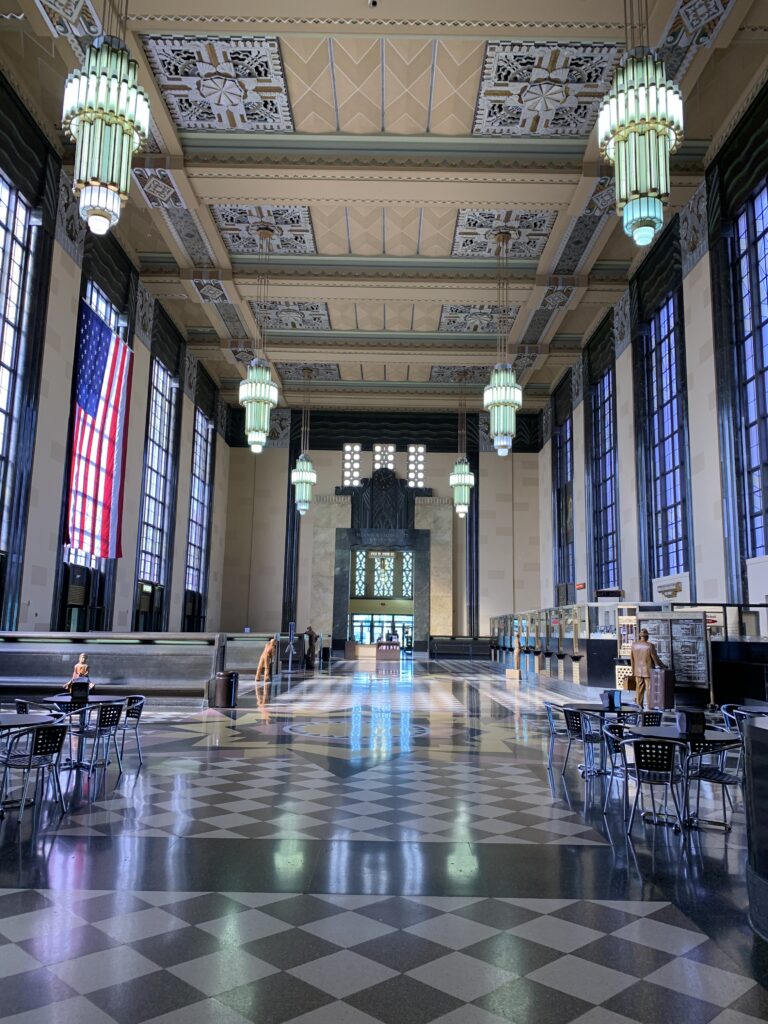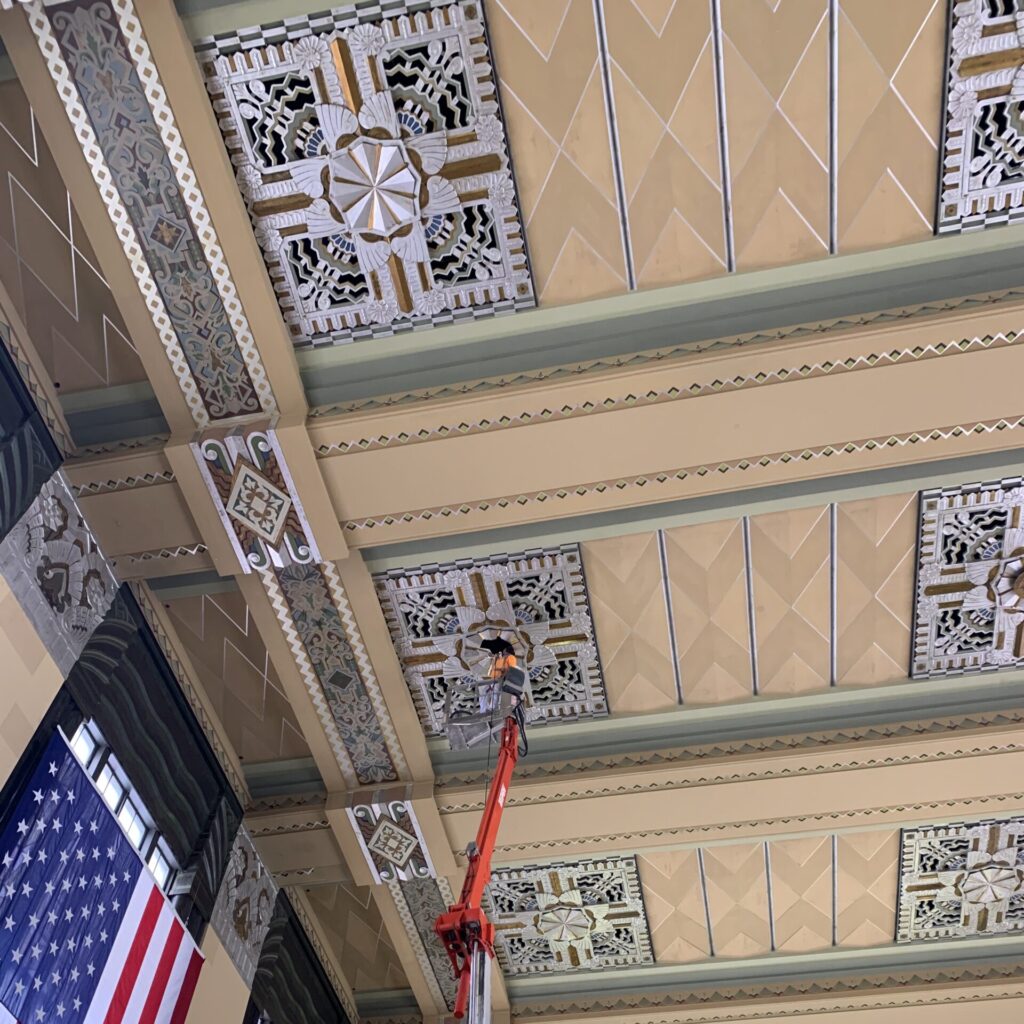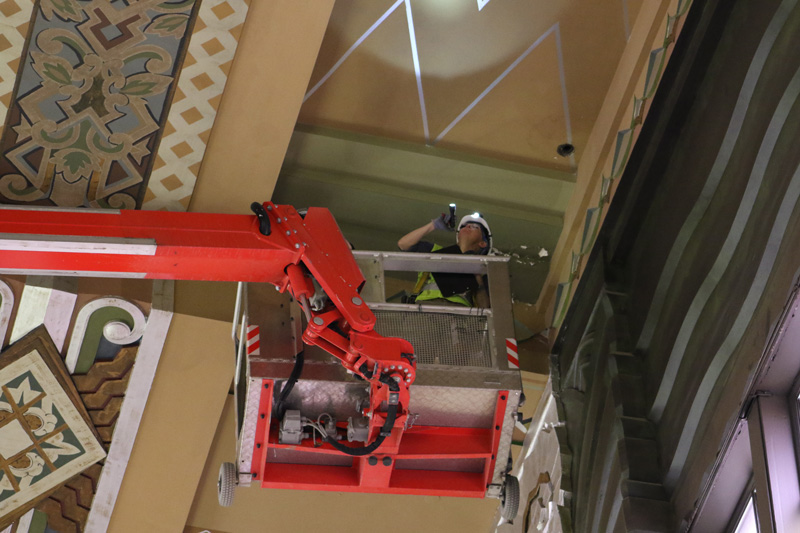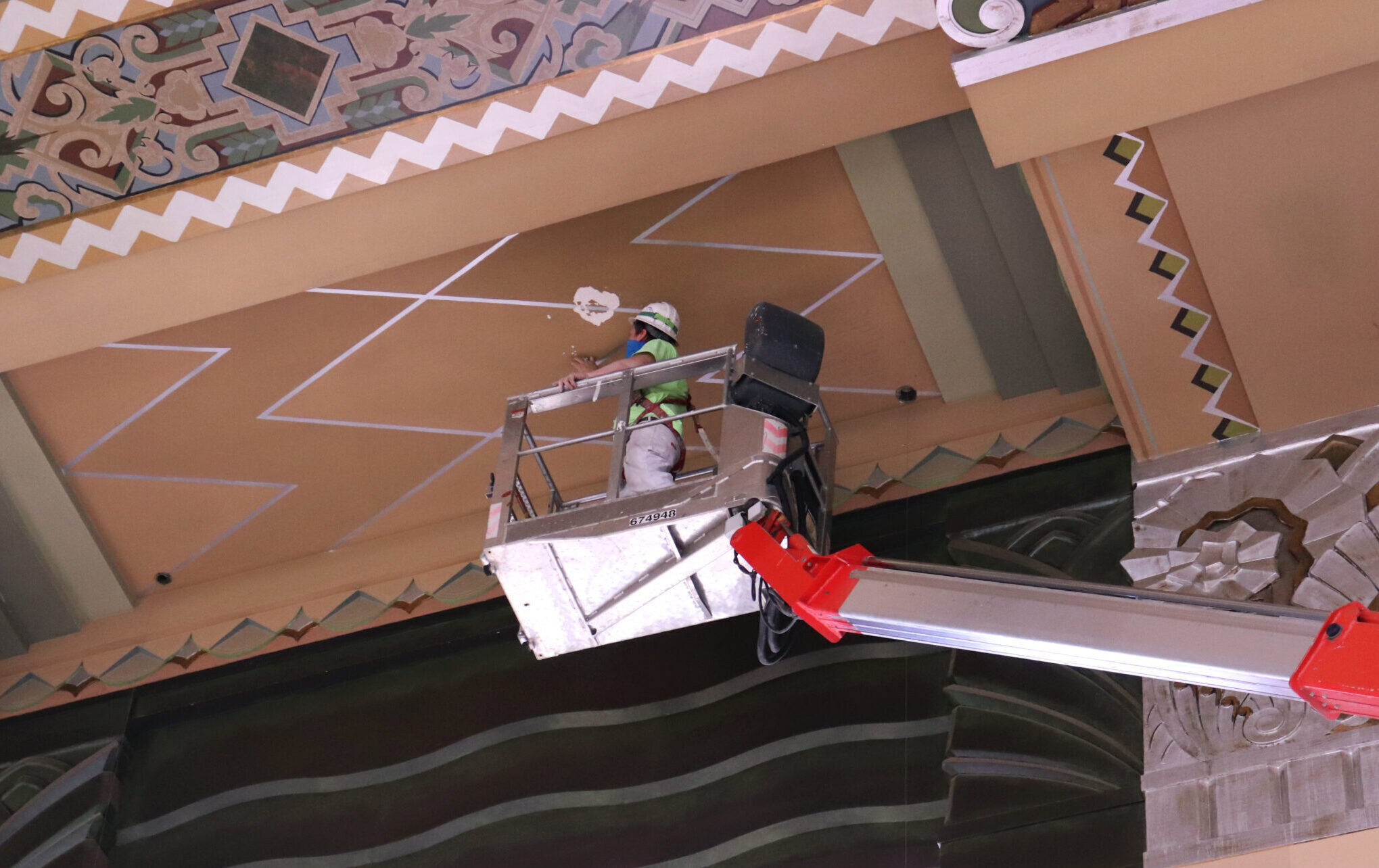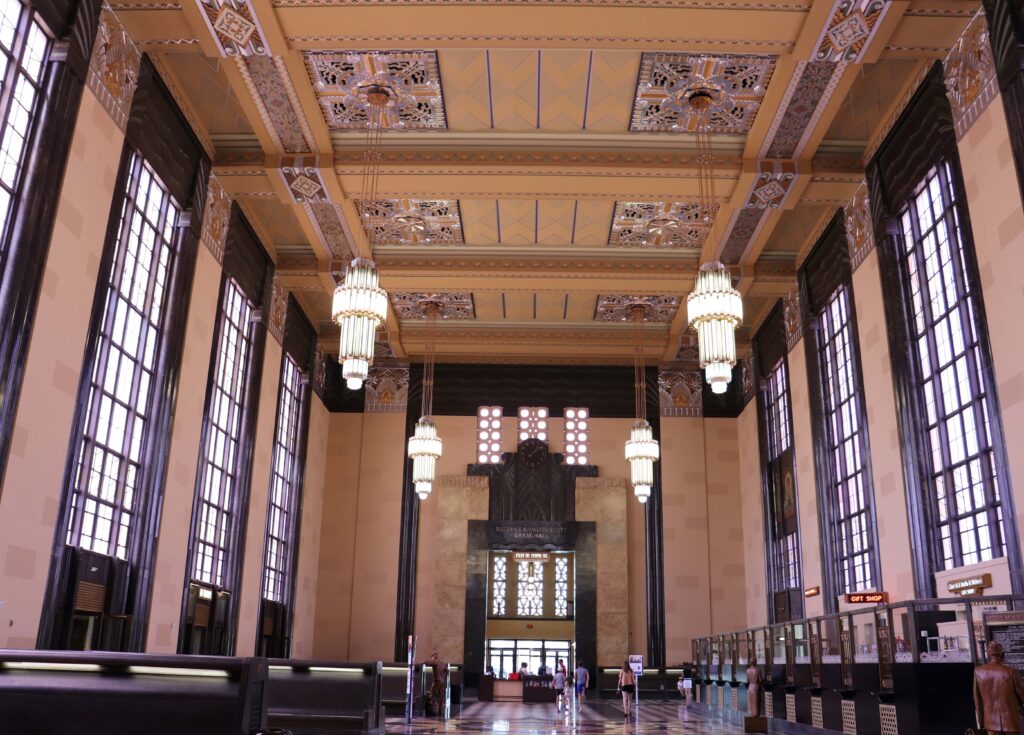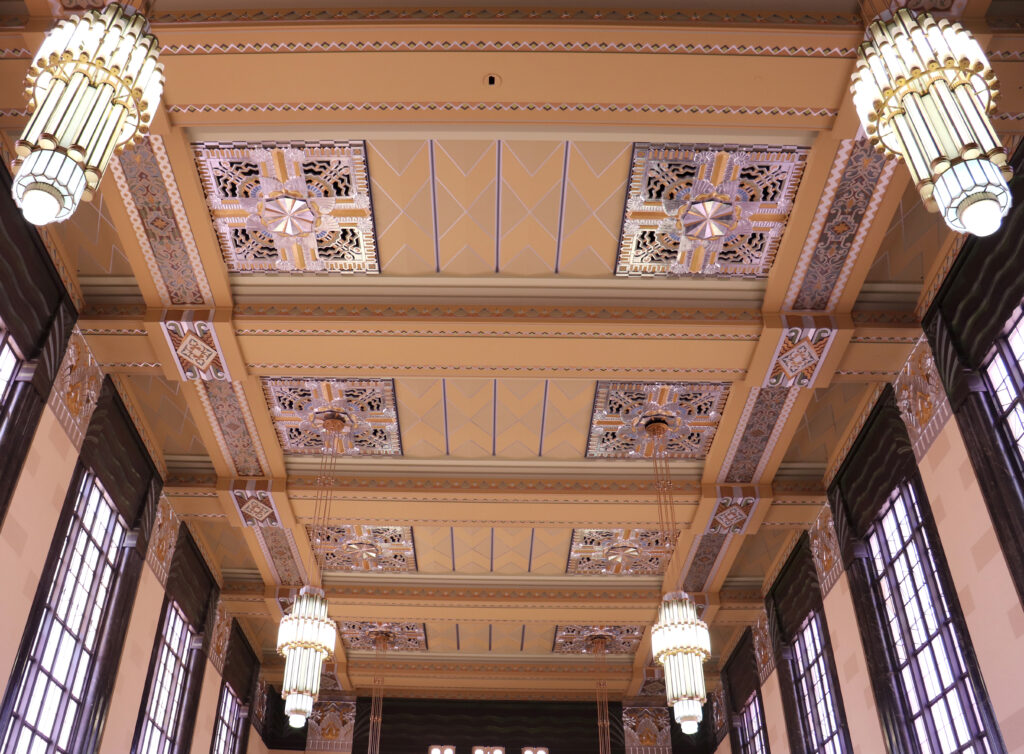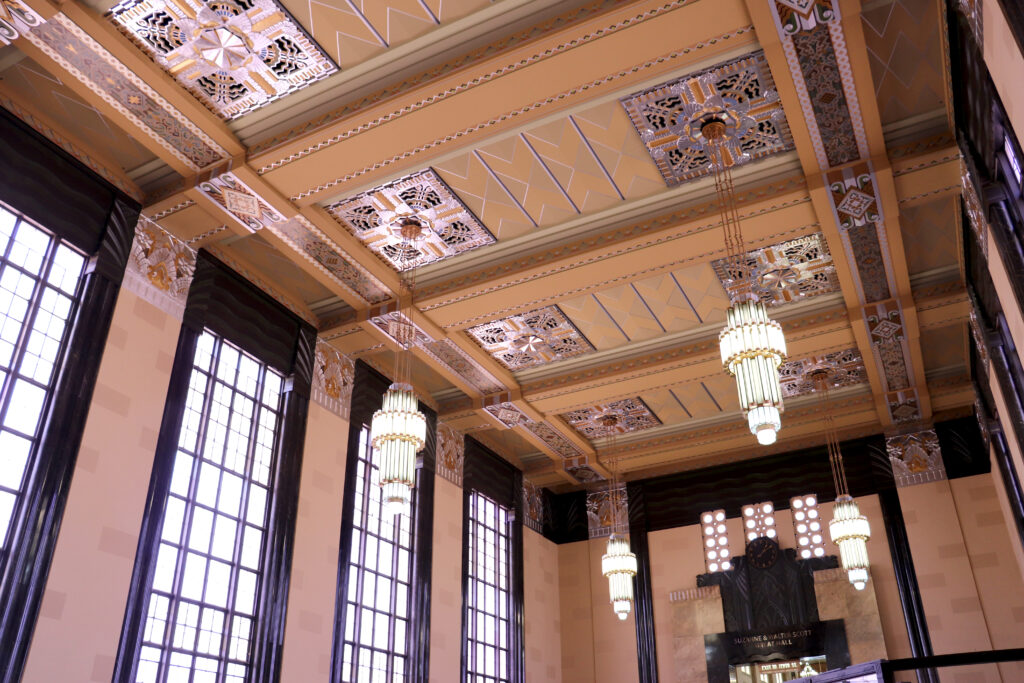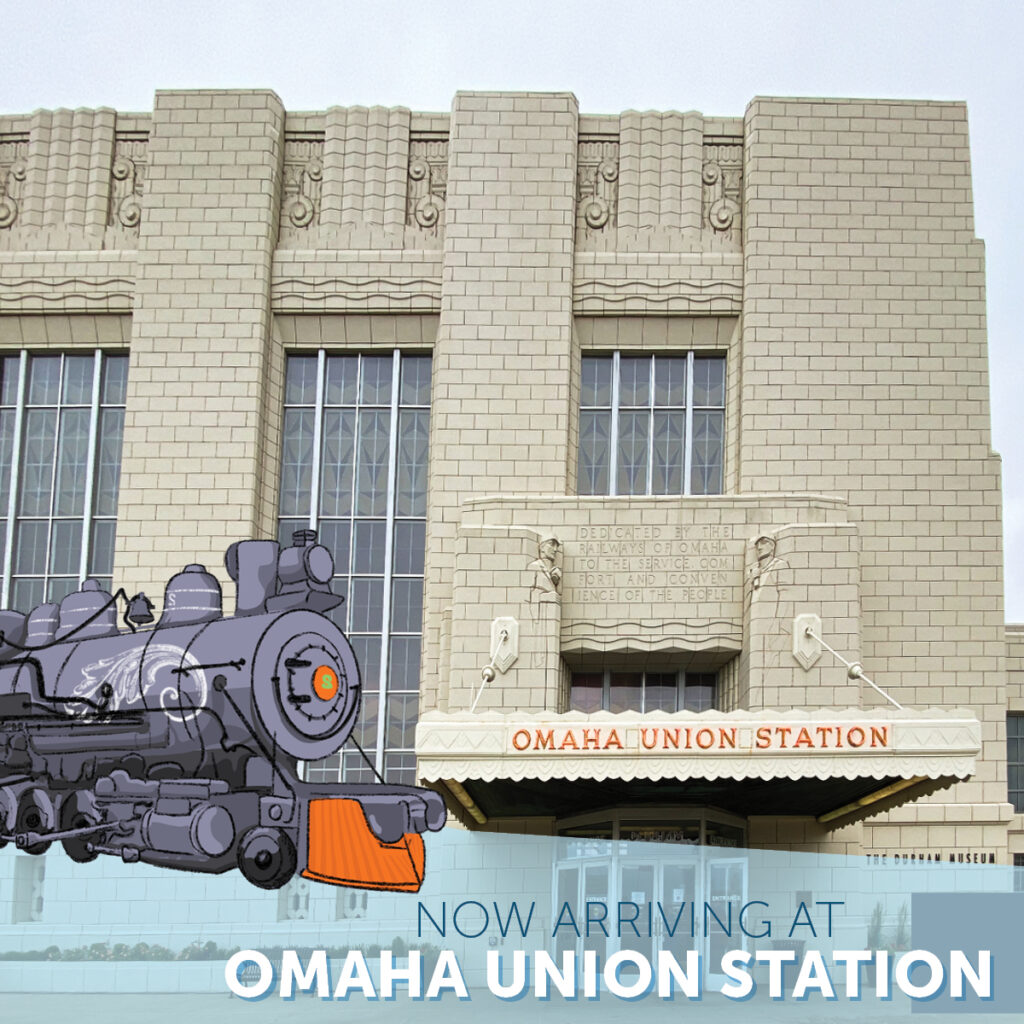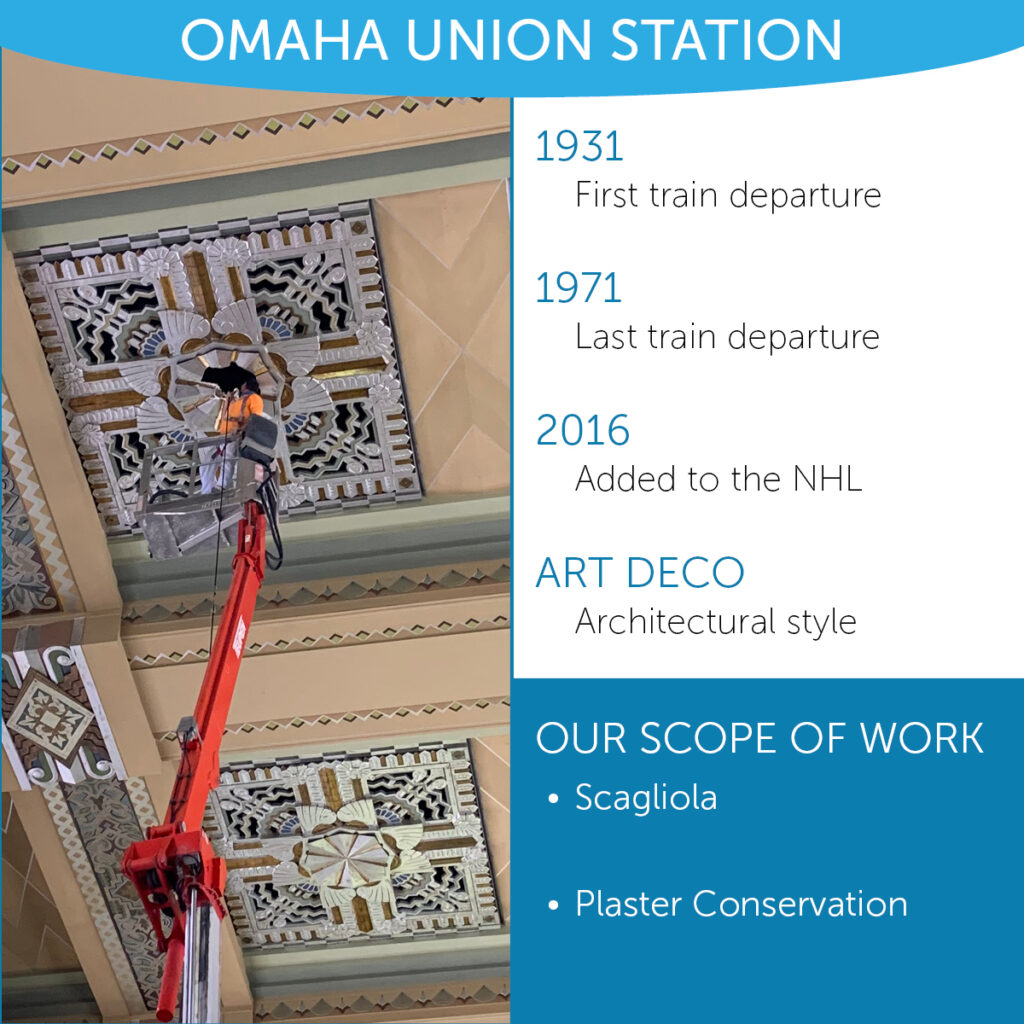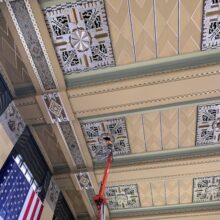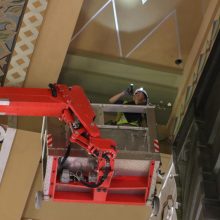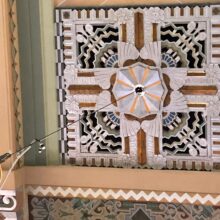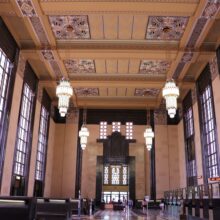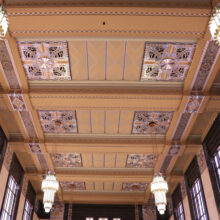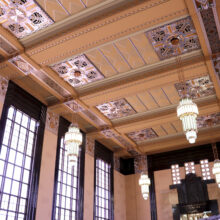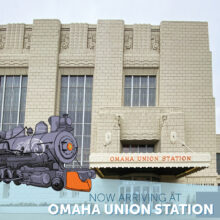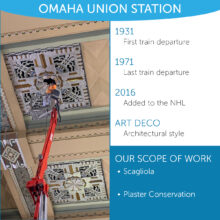Great Hall
The Durham Museum is housed in the former Omaha Union Pacific Passenger Terminal, which was constructed to replace the previous union station, built in 1899. Designed by noted western architect Gilbert Stanley Underwood and completed in 1931, it is recognized as one of the best examples of Art Deco style architecture in the Midwest. In 2016, the building was declared a National Historic Landmark.
Our conservators were brought in by The Durham Museum to conduct a condition assessment of plaster ceiling surfaces in the Great Hall, Swanson Gallery, and the West End Corridor of The Durham Museum. The purpose of the assessment was to evaluate the condition of historic ornamental plaster ceiling elements to support the development of strategies for needed repair.
A survey of painted plaster ceilings at the Great Hall, Swanson Gallery, and West End Corridor identified several areas of cracking and instability where flat plaster is in need of reinforcement and repair. Limited visual examination of the rear of the Great Hall and Swanson Gallery ceilings from the attic space indicated that previous and ongoing plaster system damage stems from roof leaks associated with drainage systems and masonry details.
Following on-site investigation, EverGreene provided a comprehensive condition survey mapping each type of deterioration to its location, and provided recommendations for interim stabilization and high-priority repairs in anticipation of full-scale restoration in the future.
Suzanne and Walter Scott Great Hall
The Suzanne and Walter Scott Great Hall, originally known as the main waiting room of Omaha’s Union Station, features ceilings with detailed Art Deco designs and colors.
EverGreene craftspeople completed the replication of the gilded and decorative finishes and painting in the Great Hall of the Durham Museum. The gilded and decoratively painted elements had previously been poorly repainted and ‘touched-up’ over the years, far from their original appearance. The large painted decorative panels on the side wall beams (between the cross beams) were cleaned and our team in-painted any losses and applied a non-yellowing conservation varnish to retain the original historic finishes.
